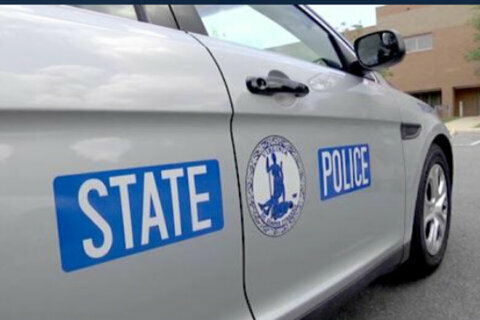As the arduous task of cleaning up the remains of the Francis Scott Key Bridge in Baltimore continues, one environmental group said they are concerned about potential pollution impacts we could see from the process.
Emily Ranson, the Chesapeake regional director for the advocacy group Clean Water Action, said some concerns include how any hazardous materials will be removed and sediment blooms caused by dredging.
Some hazardous materials on board the Dali ship were “breached” during the crash, according to National Transportation Safety Board chair Jennifer Homendy during a press conference last week.
The Environmental Protection Agency (EPA) deployed its response team on Saturday, and in a release, said it would “provide recommendations, as needed, on the development of removal or recovery plans and strategies.” The Coast Guard is also still leading the charge in making sure the runoff from the Patapsco River doesn’t harm the surrounding environment or drinking water.
Ranson said there is some worry about a natural gas line that runs under the river. The City of Baltimore said Baltimore Gas and Electric (BGE) lowered the pressure in the underwater natural gas line and is working with the city to “inert the pipeline to free it from hazards and risk.”
The visible sheen left on the surface of the water came from soap products, perfume products and resin, according to the Unified Command’s joint response agency, adding, “At this time, no atmospheric hazards have been detected and the Unified Command continues to ensure safety.”
“With natural gas, we’re always concerned about the potential for leaks,” Ranson said.
She said communities near the bridge collapse site, many of which are minority communities, have expressed concerns about pollution in the past. Ranson’s hope is, during this recovery, the cleanup process will be as transparent as possible.
“That way, people who live in this area, who live around the bridge, have confidence in the bridge cleanup process,” she said.
The collapse has also made it more difficult for vehicles carrying hazardous materials.
The Maryland Transportation Authority encouraged drivers to avoid the Interstate 695 corridor, with closures on the outer loop at MD-173 and the inner loop at MD-157. The MDTA said drivers should take Interstate 95 and Interstate 895 through Baltimore.
Vehicles transporting hazardous materials are prohibited in tunnels and drivers of those vehicles should use the western section of I-695 between Catonsville and Towson, the MDTA added. This includes vehicles carrying bottled propane gas in excess of 10 pounds per container, bulk gasoline, explosives and significant amounts of radioactive materials.
WTOP’s Ciara Wells contributed to this report.
Get breaking news and daily headlines delivered to your email inbox by signing up here.
© 2024 WTOP. All Rights Reserved. This website is not intended for users located within the European Economic Area.








